Complete Solutions to Example Example Type of chapter CURRENT ELECTRICITY of Class 12 book with complete answers and questions
| Class 12 | PHYSICS |
| Chapter | CURRENT ELECTRICITY |
| DC PANDEY | Example Example Type |
| Number Of Questions | 36 |
| Academic Year | 2023-24 |
In a given time of `10s, 40s` electrons pass from right to left. In the same interval of time 40 protons also pass from left to right. Is the average current zero? If not, the find the value of average current.
View SolutionA constant current of `4A` passes through a wire for `8s`. Find total charge flowing through that wire in the given time interval.
View SolutionA wire carries a current of `2.0A`. What is charge that has flowed through is cross section in `1.0s`? How many electrons does his correspond to?
View SolutionThe current in a wire varies with time according to the relation `i=(3.0A)+(2.0A//s)t`
a. How many coulomns of charge pass a cross section of the wire in the time internal between `t=0` and `t=4.0s`?
b. What constant current would transport the same charge in the same time interval?
View SolutionCurrent passing through a wire decreases linearly from `10 A` to `0` in 4s. Find total charge flowing through the wire in the given time interval.
View SolutionElectric field inside a conductor is always zero. Is this statement true of false?
View SolutionAn electron beam has a aperture of `1.0mm^2`. A total of `6.0xx10^16` electrons go throgh any perpendicular cross section per second.Find a. the current and b. the current density in the beam.
View SolutionCalculate the drift speed of the electrons when `1A` of current exists in a copper wire of cross section `2mm^2` The number of free electrons in `1cm^3` of copper is `8.5xx10^22`
View SolutionTwo copper wires of the same length have got different diameters
a. which wire has greater resistance?
b. greater specific resistance?
View SolutionA wire has a resistance `R`. What wil will be its resistance if it is stretched to double its length?
View SolutionA copper wire iis stretched to make it `0.1%` longer. What is the percentage change in its resistance?
View SolutionThe resistance of a thin silver wire is `1.0 Omega` at `20^@C`. The wire is placed in a liquid bath and its resistance rises to `1.2 Omega`. What is the temperature of the bath? `alpha` for silver is `3.8xx10^03//(.^(@) C)`
View SolutionRead the following statements carefully
`Y`: The resistivity of semiconductor decreases with increases of temperature.
`Z`: In a conducing solid, the rate of collisions between free electrons and ions increases with the increase of temperature.
Select the correct statement (`s`) from the following
a. `Y` is true but Z is false b.`Y` is false but `Z` is true
c.Both `Y` and `Z` are true d. `Y` is true `Z` and `Z` is the correct reason for `Y`
View SolutionAn electric toaster uses nichrome for its heating element. When a negligibly small current passes through it. It resistance at room temperature `(27.0^@C)` is found to be `75.3Omega`. When the toaster is connected to a `230 V` supply, the current settles, after a few seconds, to a steady value of `2.68 A`. What is steady temperature of the nichrome element? The temperature coefficient of resistance of nichrome averaged over the temperature range involved , `1.70xx10^-4C^-1`
View SolutionThe current voltage graphs for a given metalic wire two different temperature `T_1` and `T_2` are shown in figure The temperature `T_2` is greater than `T_1.` Is this statement true or false?
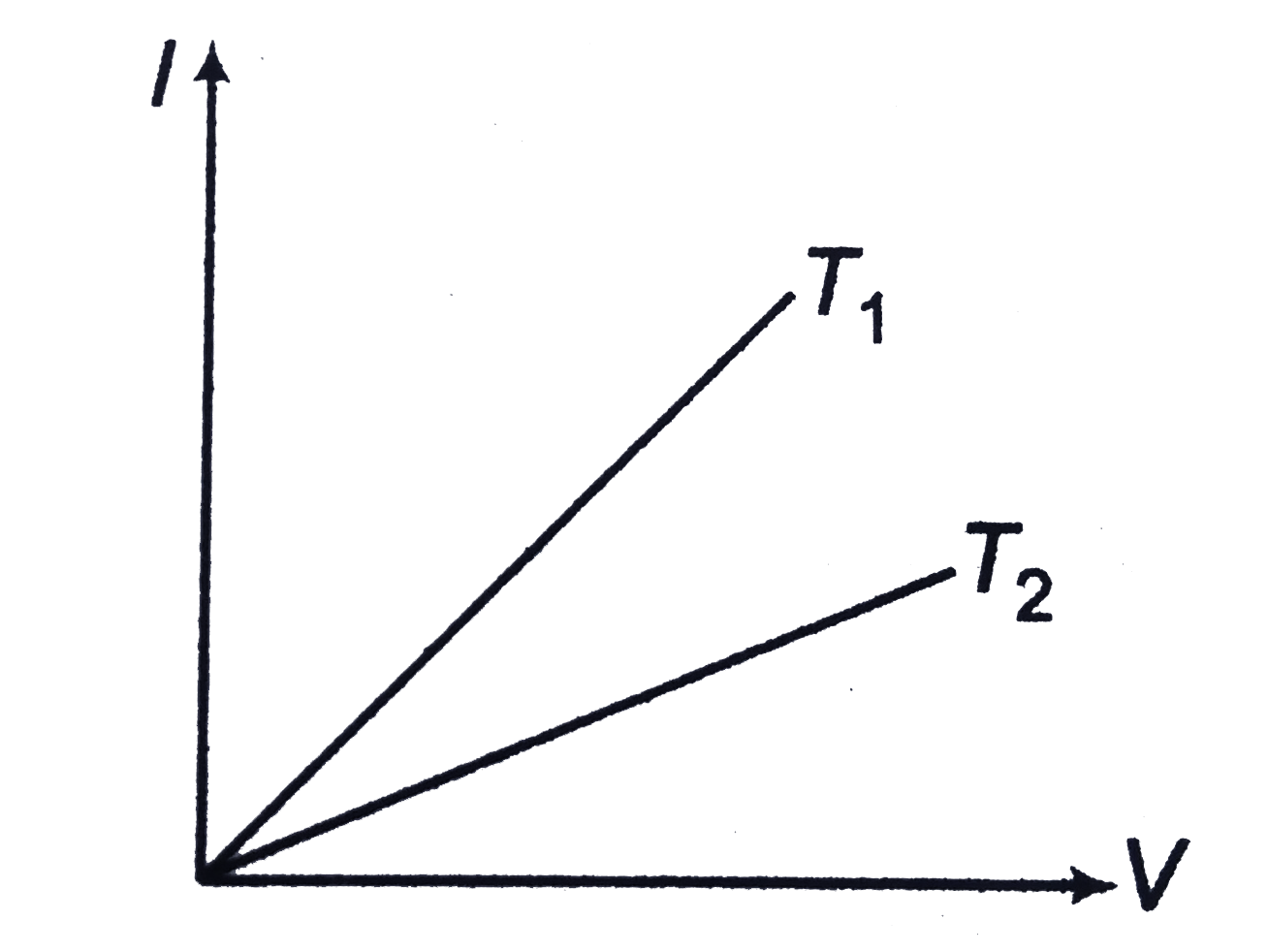
View SolutionCompute the equivalent resistance of the network shown in figure and find the current in drawn from the battery.

View SolutionFind currents in different branches of th electric circuit shown in figure.
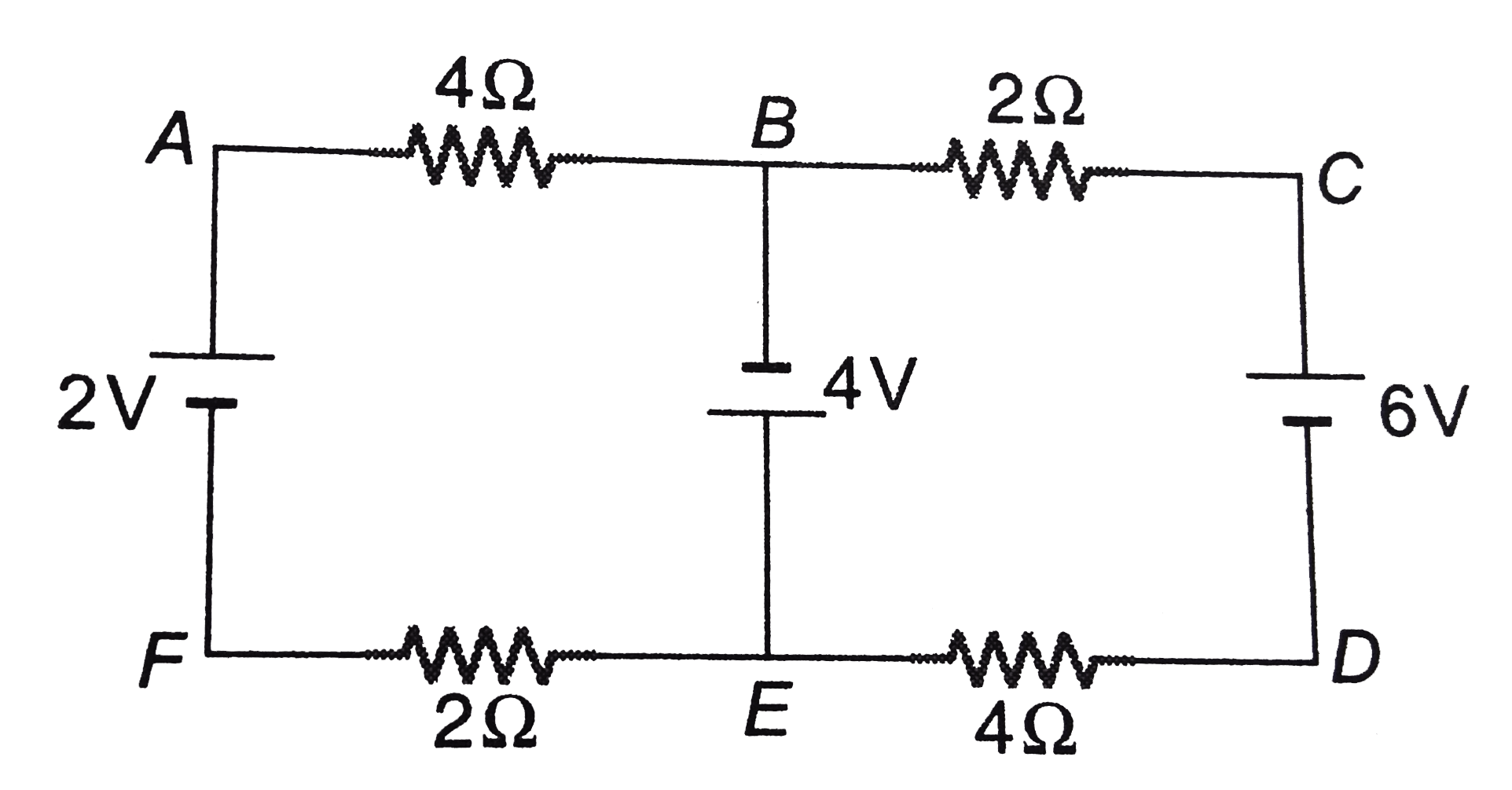 How to Proceed : In this problem there are three wires `EFAB, BE` and `BCDE`. Therefore, we have three unknown currents `i_1, i_2` and `i_3`. So, we require three equations. One equation will be obtained by applying Kirchhoff's junction law (either at `B` or at `E`) and the remainig two equations, we get from te second law (loop law). We can make three loops `ABEFA, ACDF` and `BCDEB`. But we have to chose any two of them. Initilly, we can choose any arbitrary directions of `i_1, i_2` and `i_3`.
How to Proceed : In this problem there are three wires `EFAB, BE` and `BCDE`. Therefore, we have three unknown currents `i_1, i_2` and `i_3`. So, we require three equations. One equation will be obtained by applying Kirchhoff's junction law (either at `B` or at `E`) and the remainig two equations, we get from te second law (loop law). We can make three loops `ABEFA, ACDF` and `BCDEB`. But we have to chose any two of them. Initilly, we can choose any arbitrary directions of `i_1, i_2` and `i_3`.
View SolutionIn the circuit shown in figure
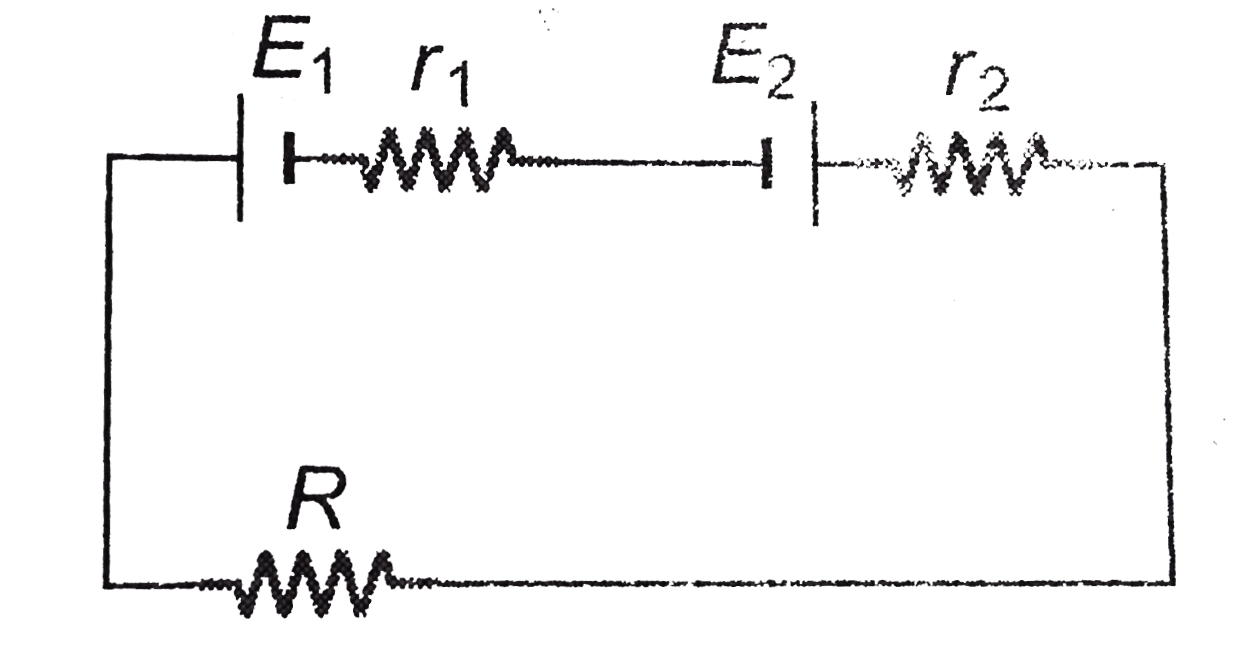
`E_1=10 V, E_2=4V, r_1=r_2=1Omega` and `R=2Omega`.
Find the potential difference across battery 1 and battery 2.
View SolutionIn the circuit shown in figure find
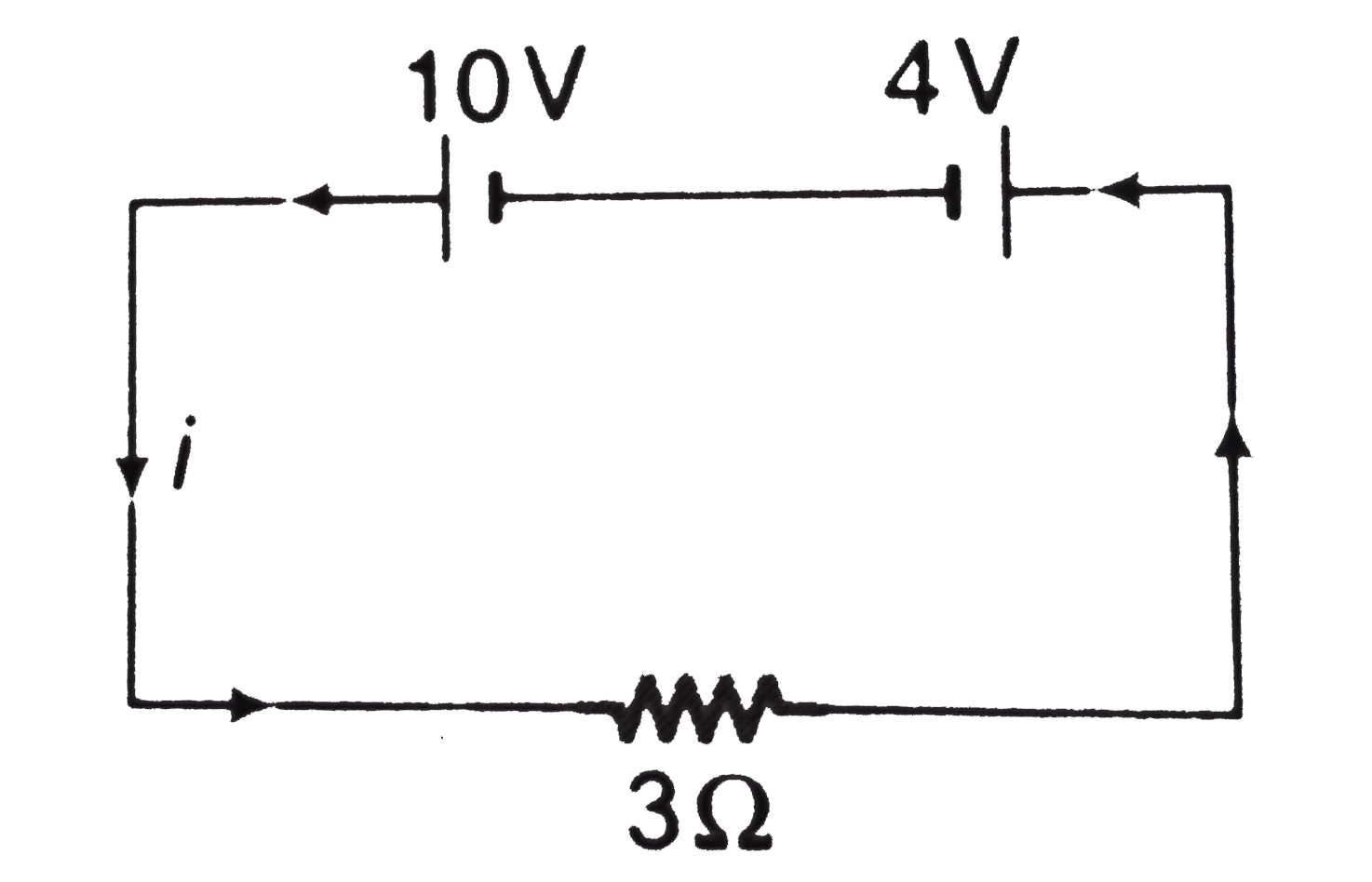
a. The power supplied by 10 V battery
b. The power consumed by `4 V` battery and
c. The power dissipated in `3Omega` resistance.
View SolutionIn the circuit shown in figure find the heat developed across each resistance in `2 s`.
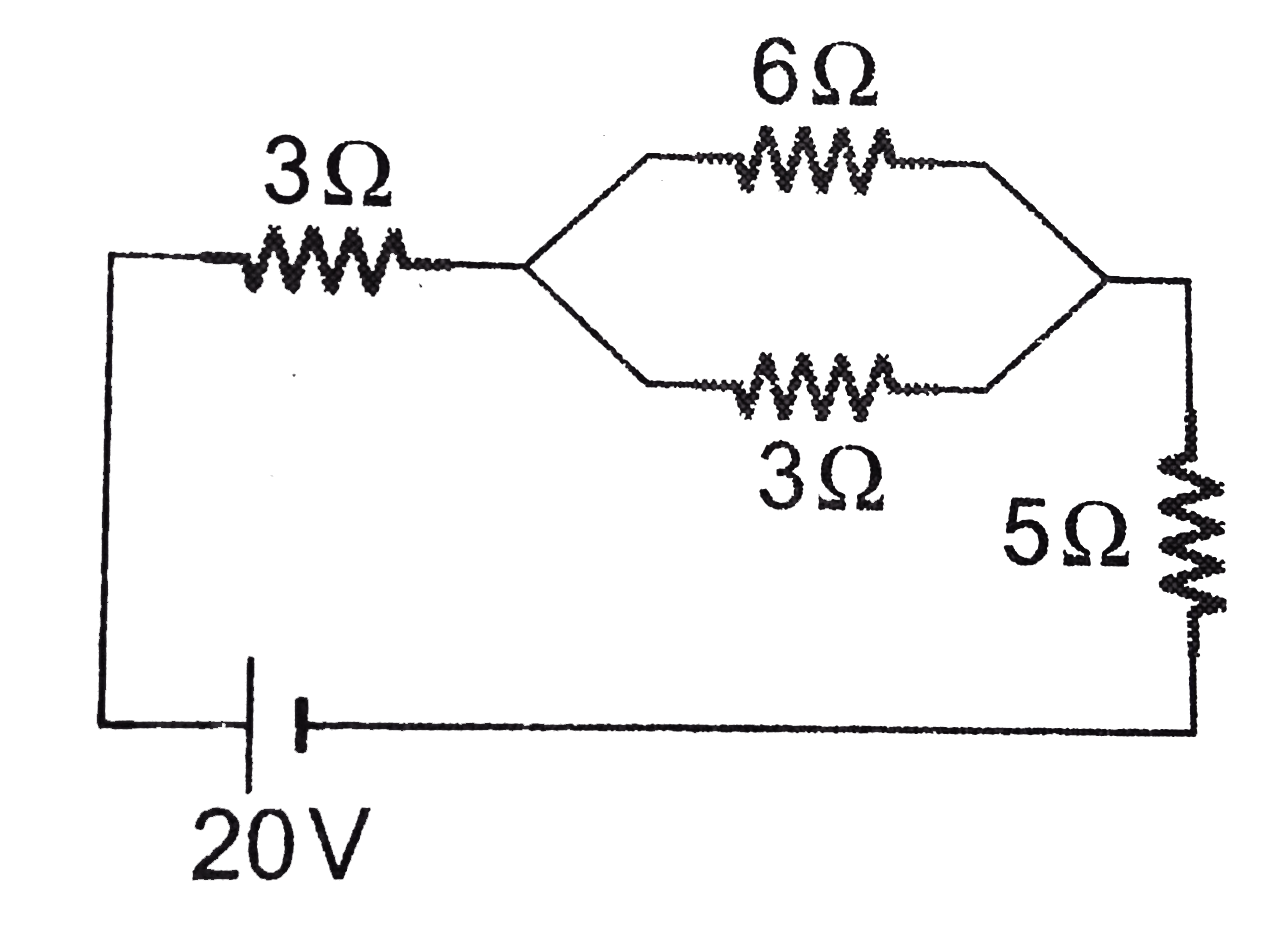
View SolutionFind the emf and internal resistance of a single battery which is equivalent to a combination of three batteries as show in figure.
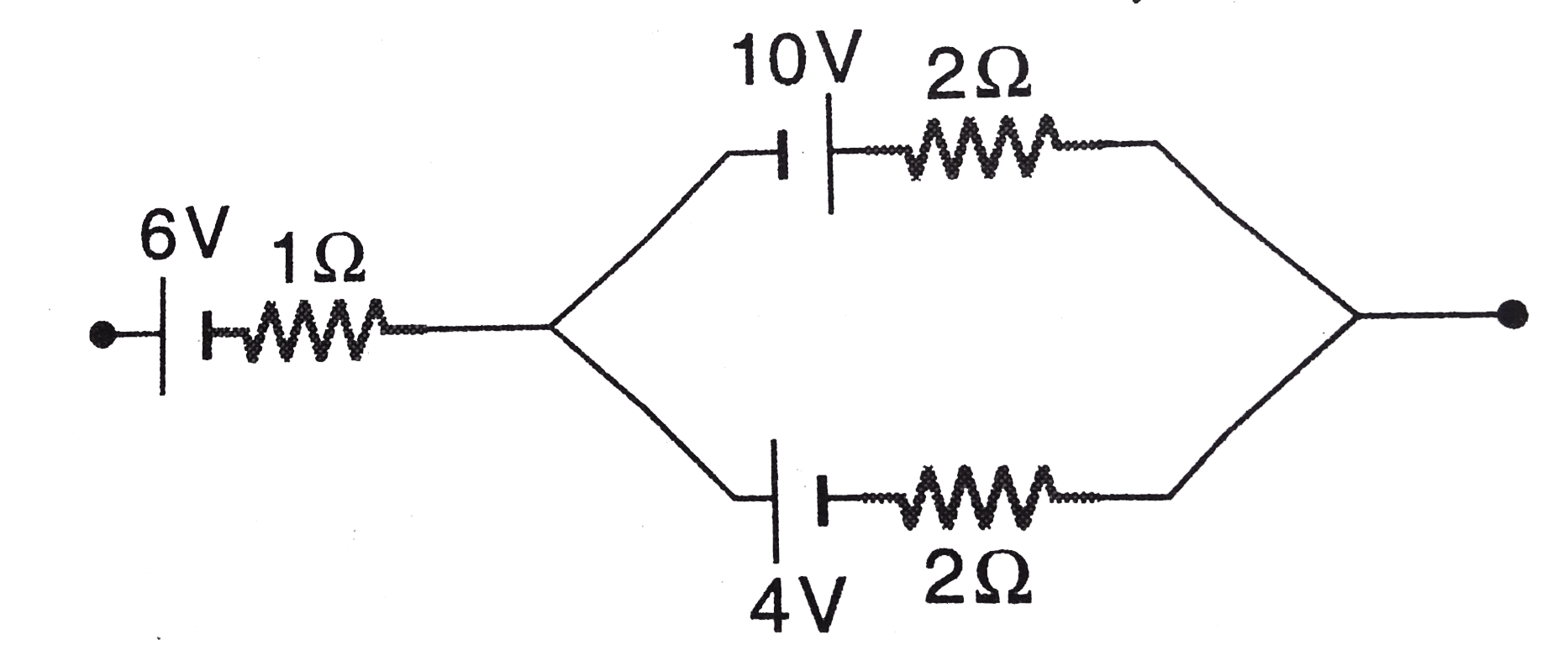
View SolutionIn the circuit in figure `E_1=3V, E_2=2V, E_3=1V` and `R=r_1=r_2=r_3=1Omega`
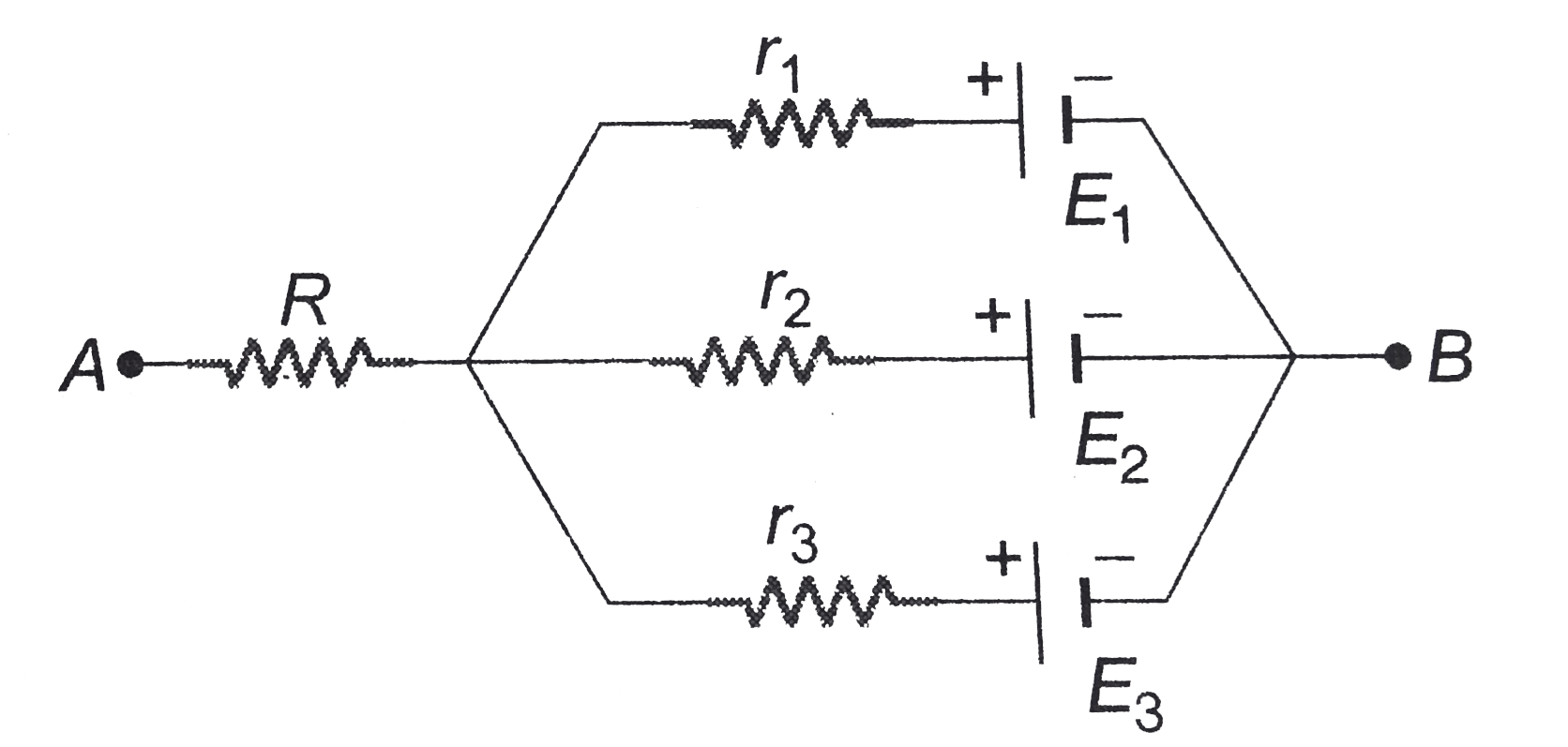
Find the potential differece between the points `A` and `B` and the currents through each branch.
View SolutionWhat shunt resistance is required to make the `1.00 mA`, `20 Omega` Galvanometer into an ammeter with a range of 0 to `50.0A`?
View SolutionHow can we make a galvanometer with `G=20 Omega` and `i_g=1.0 mA` into a voltmeter with a maximum range of `10 V`?
View SolutionResistance of a milli ammeter is `R_1` of an ammeter is `R_2` of a voltmeter is `R_3` and of a kilovoltmeter is `R_4`. Find the correct order of `R_1, R_2, R_3` and `R_4`.
View SolutionA microammeter has as resistance of `100 Omega` and full scale range of `50 muA`. It can be used a voltmeter or as ahigher range ammeter provided a resistance is added to it. Pick the correct range and resistance combinations
50 V range with `10 kOmega` resistance in series
b.`10 V` range with `200 kOmega` resistance in series
c. 5mA rangw with `1Omega` resistance in parallel
`10 mA` range with `1Omega` resistance in parallel
View SolutionA galvanometer gives full scale deflection with `0.006 A` current. By connecting it to a `4990Omega` resistance, it can be converted into a voltmeter of range `30 V`. If connected to a `(2n)/249 Omega` resistance, it becomes an ammeter of range `0-1.5A`. the value of `n` is
View SolutionA potentiometer wire of length 100 cm has a resistance of `10 Omega`. It is connected in series with a resistance `R` and cell of emf `2 V` and negligible resistance. A source of emf 10 mV is balanced against a length of `40 cm` of the potentiometer wire. What is the value of `R`?
View SolutionWhen the switch is open in lowerpoint loop of a potentiometer, the balance point length is `60 cm`. When the switch is closed with a known resistance of `R=4Omega` the balance point length decreases to `40 cm`. Find the internal resistance of the unknown battery.
View Solution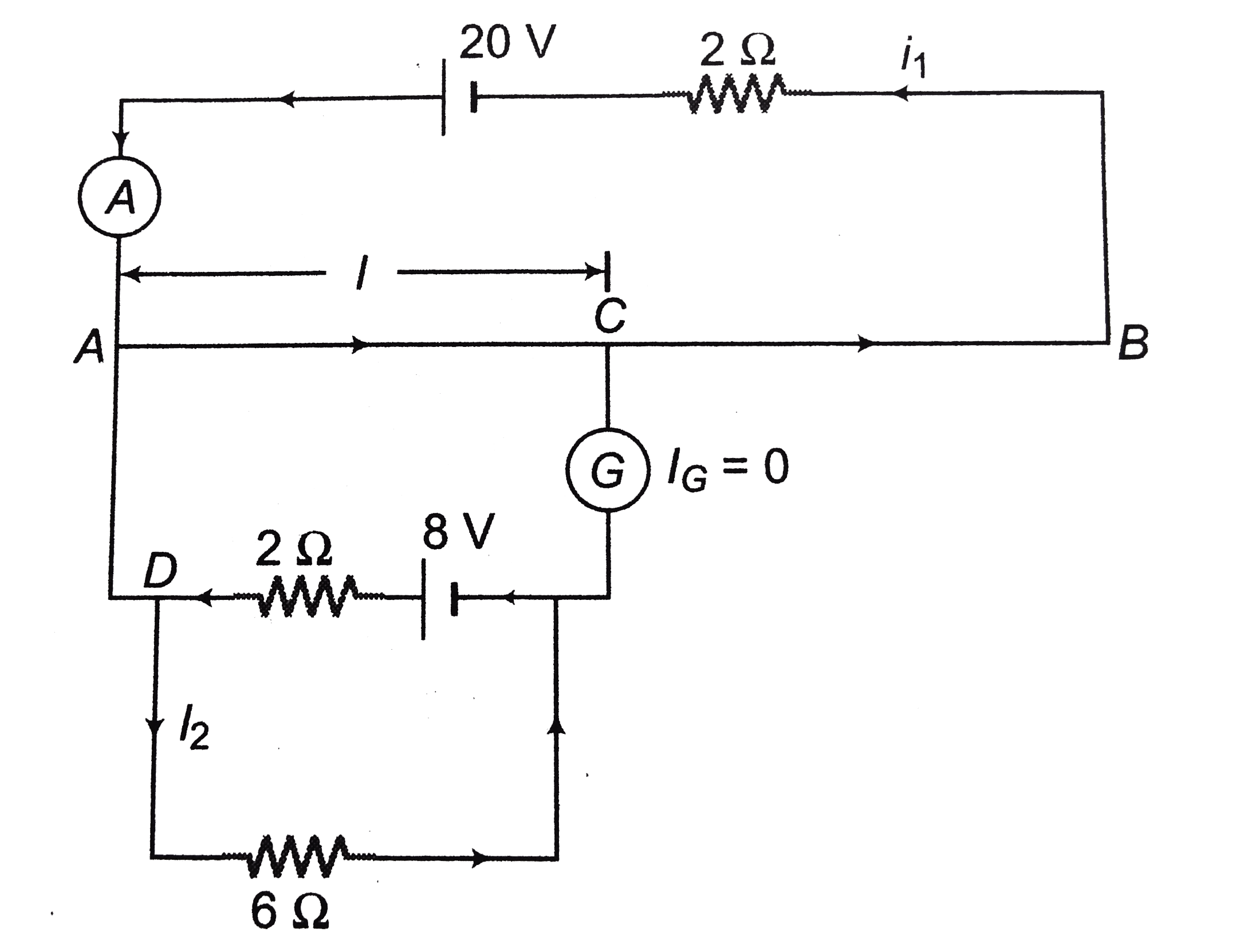
In the figure shown wire `AB` has a length of `100 cm` and resistance `8Omega`. Find the balance point length `l`.
View SolutionIf resistance `R_1` in resistance box is `300 Omega` then the balanced length is found to be `75.0 cm` from end `A`. The diameter of unknown wire is 1 mm and length of the unknown wire is `31.4 cm`. Find the specific resistance of the unknown wire
View SolutionIn a meter bridge, null point is `20 cm`, when the known resistance `R` is shunted by `10 Omega` resistance, null point is found to be shifted by 10 cm. Find the unknown resistance `X`.
View SolutionIf we use `100 Omega` and `200 Omega` in place of `R` and `X` we get null point deflection.`l=33cm`. If we interchange the resistors, the null point length is found to be `67 cm`. Find end corrections `alpha` and `beta`.
View SolutionTo locate null point deflection battery key `(K_1)` ios pressed before the galvanometer `(K_2)` Explanation why?
View SolutionWhat are the maximum and minimum values of unknown resistance `X`, which can be determined using the post office box shown in the figure?
View SolutionThe four colours on a resistor are: brown, yellow, green and gold as read from left to right. What is resistance corresponding to these colours.
View Solution
Example Example Type questions and complete solutions for chapter CURRENT ELECTRICITY of DC PANDEY ENGLISH of Class 12
All Exercises from DC PANDEY Class 12 PHYSICS CURRENT ELECTRICITY
- B. Assertion and reason
- Check point
- Example
- Example Example Type
- Example Type 1
- Example Type 2
- Example Type 3
- Example Type 4
- Example Type 5
- Example Type 6
- Exercise 23.1
- Exercise 23.10
- Exercise 23.11
- Exercise 23.12
- Exercise 23.13
- Exercise 23.2
- Exercise 23.3
- Exercise 23.4
- Exercise 23.5
- Exercise 23.6
- Exercise 23.7
- Exercise 23.8
- Exercise 23.9
- Level 1 Assertion And Reason
- Level 1 Objective
- Level 1 Subjective
- Level 2 Comprehension Example Type
- Level 2 More Than One Correct
- Level 2 Single Correct
- Level 2 Subjective
- Match the columns
- Medical entrances gallery
- Miscellaneous Examples
- OBJECTIVE_TYPE
- Taking it together